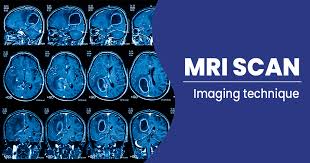How an MRI Scan Works

MRI imaging is a non-invasive diagnostic test that can help diagnose diseases and conditions. It uses magnetism to create an image of your body inside out, similar to X-rays and CT scans but able to see areas X-rays cannot reach. MRI scanning can detect brain and spinal cord disorders, heart disease, arthritis/joint issues, tumors, blood vessels – just to name a few – as well as many other organs and tissues.
How an MRI Works
During the test, which can last up to 30 minutes, you are instructed to lie still and relax. This helps guarantee clear pictures while reducing motion blurring. Any movement – particularly your head or back – could cause images to look blurry. You may be instructed to hold your breath or not breathe at certain intervals depending on which part of your body is being scanned.
Once inside, you will be placed on a table that slides into an opening in the magnet of an MRI machine. This enables the technician to move a device called a coil around the area of your body that needs scanning, providing them with the clearest picture possible of that specific region.
If you have any metal objects on your body, such as a medical device with metal, or jewelry containing metal, they could cause the pictures on an MRI scanner to become blurry. Your doctor may suggest that you remove these items before the test begins.
Your doctor will provide you with a special gown to wear during the scan. Additionally, all jewellery, keys and other metal objects should be removed from your body to avoid magnetic fields from interfering with imaging results.
Before your scan, the radiographer will administer several injections of contrast medium to enhance certain tissues and make the MRI images clearer and more useful for the doctor.
During the scan, you can communicate with your radiographer via intercom. Additionally, headphones provided will allow you to listen to music or other audio through them.
You are required to remove any metal from your skin, including watches and bracelets, in order to protect yourself from magnet damage. Furthermore, make sure all clothing contains no metal components like zippers or clips which could attract metal particles.
Before the test, inform the staff if you are pregnant or have metal implants such as a pacemaker or heart valve. Doing so can make it difficult for the radiographer to scan you properly.
The MRI machine makes a lot of noise during the test, so you should wear earplugs. Additionally, keep your eyes closed during the scan to reduce sound levels.
Once the test is over, you will exit the MRI room and return to your normal routine. Following that, contact your doctor to discuss the results with them.




